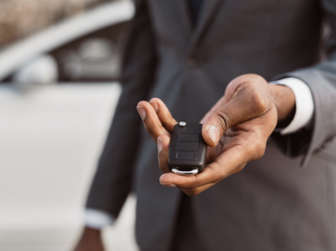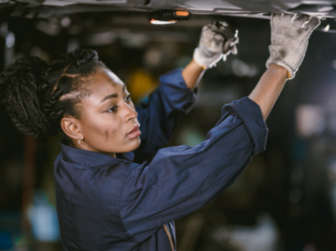If you drive a manual vehicle, the clutch is one of the most important parts of the car because it’s used to disengage and engage power to the wheels. If you notice the clutch disengages easier than before, it could be a sign that your clutch is slipping.
This happens more frequently to vehicles that drive in congested traffic, with newer drivers, and cars with upgraded engines. When you press on the clutch, it separates the engine from the wheels, allowing you to change gears. When you feel your clutch slipping, power can’t be delivered to the wheels and your car will have trouble driving.
 Signs your clutch might need to be replaced
Signs your clutch might need to be replaced
- You rev your engine, but your car can’t pick up speed. You might notice the RPM go up quicker than normal.
- A burning smell when revving the engine, which is caused by the excess heat from the constant engagement and disengagement of the engine.
- Squeaking or unusual rumbling noises when you press on the pedals.
- It’s difficult to change gears and there’s a ‘stickiness’ when moving from one gear to another.
- You feel movement in the clutch pedal, like vibrating or a feeling of being loose.
- The clutch pedal is at a different height.
 What should I do if my clutch is slipping?
What should I do if my clutch is slipping?
A clutch should last at least up until 50,000km, and could last much longer, but this depends on a variety of factors such as the type of traffic you drive in, driving skills and good maintenance. A car will need a clutch to be replaced several times during its lifetime, so it’s not something to expect as a part of car ownership.
If you find your clutch is slipping, try not to drive your car too much and take it to your nearest trusted workshop so the experts can make an assessment and a recommendation.
 Tips to help your clutch last longer
Tips to help your clutch last longer
The good news is that the clutch can be maintained quite easily with good vehicle maintenance and driving skills. Below are some tips to help you increase your clutch lifespan, ensuring it performs at its best for a long time:
- The clutch should be used as a switch. The clutch is meant to be operated either completely engaged or completely disengaged. When driving, avoid keeping the clutch pedal slightly depressed (known as “clutch riding”) because this reduces the efficiency of the clutch. Instead, time your gear shifts, acceleration and braking in such a way that there is no jerking motion from the car.
- Never rev the engine when the clutch is engaged. The engine revs a lot faster when the clutch is engaged, and the high RPMs put a lot of strain on the clutch. Time the gear shift and acceleration in such a way that the RPM never spikes, so the entire operation takes place smoothly.
- Don’t drive aggressively. This means pull off smoothly from a stop and brake gently.
- Learn how to take off on a hill. Clutch riding on a hill climb is common. Use the hand brake instead of riding the clutch. This will save your clutch and is also the safer option.
Updated: How to avoid a carjacking
The new VW Tiguan is a comfy and good-to-drive SUV


